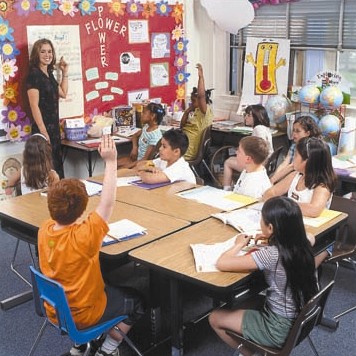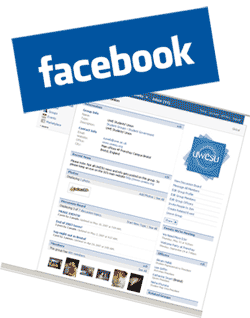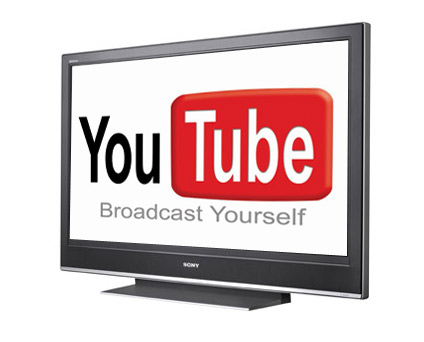 We are currently living in a technogically-advanced world and the Internet has been highly-regarded as a necessity in life and not a want anymore. As a 15-Year-Old student, I spend several hours on the net daily to find information on Wikipedia for my school projects, watch Barack Obama’s speeches on YouTube, and get in touch with my friends on social networking websites Facebook and Twitter. For the past generations, kids like me do not even get a chance to surf the Internet at all when they are young.
We are currently living in a technogically-advanced world and the Internet has been highly-regarded as a necessity in life and not a want anymore. As a 15-Year-Old student, I spend several hours on the net daily to find information on Wikipedia for my school projects, watch Barack Obama’s speeches on YouTube, and get in touch with my friends on social networking websites Facebook and Twitter. For the past generations, kids like me do not even get a chance to surf the Internet at all when they are young.
As the Internet is growing at an exponential rate all thanks to tech companies such as Google, Facebook and Twitter, schools and colleges are also catching up the trend too. For example, my school has two e-learning days every year. During these days, students need not to go school for lessons. Instead, we attend lessons online on Studywiz, an e-learning platform developed by Etech Group. Teachers would upload Powerpoint slides or worksheets in Word document onto Studywiz. We must access them and complete all the tasks given. We students love this “holiday”, probably it’s because we can enjoy two luxuries – using the computer at the comfort of our home and need not to go school to attend lessons.
Of course there are several advantages and downsides in e-learning. The advanced technology has made completing tasks online much easier and more efficiently, hence precious time will not be wasted. Also, in an unfortunate case of a pandemic, like SARS or the recent Swine Flu scare whereby students are required to stay at home, then e-learning would come in really handy. Since learning and communicating with students or teachers online does not have any physical interaction, therefore minimizing the spread of the virus. According to many studies, schools play an important role in teaching us valuable leadership and communication skills that cannot be learnt on the Internet. Besides that, most of our friends are befriended from schools rather than from strangers on the net.
Have you ever wondered what will the future of education be like? Well, I will not be surprised that probably one or two decades later, our future generations will be studying in virtual schools whereby students attend lessons all on the web. Teachers will then make use of social websites such as Facebook, Twitter and YouTube to engage students in lessons.
Facebook:
 Despite being a social networking tool mainly for young adults to connect with their friends, co-workers and family members on the Internet by posting updates, uploading photos and videos, Facebook can also become an excellent e-learning platform. By just tweaking some of the technologies, teachers can publish their slides for lessons and lots more multi-media contents.
Despite being a social networking tool mainly for young adults to connect with their friends, co-workers and family members on the Internet by posting updates, uploading photos and videos, Facebook can also become an excellent e-learning platform. By just tweaking some of the technologies, teachers can publish their slides for lessons and lots more multi-media contents.
With a strong and powerful platform, educators can even create some useful applications for Facebook that comes with better functions and features for education using state-of-the-art technology. For example, they can develop an application that allows students to consult their teachers directly, thus increasing the efficiency for both students and teachers to solve problems.
Twitter:
 Actually Twitter is an extremely simple platform for friends and co-workers, etc. However, some people even said that it is useless. Just because of that, Twitter has provided us a bigger space for imagination which can make the micro-blogging service be a protocol instead of a platform. Currently, as a standard Internet real-time communication protocol, Twitter has lots of useful features for education too.
Actually Twitter is an extremely simple platform for friends and co-workers, etc. However, some people even said that it is useless. Just because of that, Twitter has provided us a bigger space for imagination which can make the micro-blogging service be a protocol instead of a platform. Currently, as a standard Internet real-time communication protocol, Twitter has lots of useful features for education too.
Students and teachers are able to send replies or DMs to post questions to teachers which means it a real-time two-way communication. As a protocol, an online quiz application can be created based on Twitter. This simply means that the teacher can send quizzes to students through Twitter and students can answer them via the service too. This is also known as a new concept for real-time communication.
YouTube:
 As the largest Social Website in the world (According to the Alexa Rank), YouTube, as a video sharing website, plays an important role in enhancing our experience on the Web. Of course, videos can help a lot in education too. The typical usage of videos is to enable teachers to record education-related videos and students are able to watch them on YouTube itself. As a good interactive way of communication, video communication can also be the future of multi-media communication too.
As the largest Social Website in the world (According to the Alexa Rank), YouTube, as a video sharing website, plays an important role in enhancing our experience on the Web. Of course, videos can help a lot in education too. The typical usage of videos is to enable teachers to record education-related videos and students are able to watch them on YouTube itself. As a good interactive way of communication, video communication can also be the future of multi-media communication too.
With comprehensive Rich Media Content, teaching can be much more easier, not only the speeches, but also the history references, art resources and much more. Can you imagine how many students would sign up for virtual schools and study online? Well, I am sure the number can exceed 1,000 easily as the efficiency is much higher than the present.
Conclusion:
From the descriptions and examples from YouTwitFace, I believe that you can see what the future of education would look like in the future. We can save lots of time and money, as well as making learning more interesting stuff on the net. Currently, some teachers have started to use Twitter as a valuable education tool, see the slideshow for reference: Twenty-Five Interesting Ways* to use Twitter in the Classroom.
But of course there will be some downsides. For example, some teachers may lose their jobs due to lesser demand of teachers in the future. What’s more is that students may not pay full attention to study but to playing games instead. I am pretty sure that most of you guys especially those in the education industry might disagree with what I have described above. I would like to hear your valuable comments…Thanks!